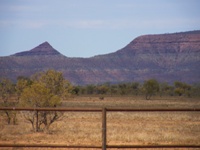Australia So Much to See


The East MacDonnell Ranges 2008. At N'Dhala Gorge a large number of Aboriginal petroglyphs (rock etchings) can be seen. We then follow the Ross River bed taking a section of the Binns Track and see fascinating waves of strata in the hills.
This rock, like so many others in the gorge, is covered with petroglyphs. It is believed to depict a story of the Caterpillar
Dreaming, depicting phases in the life journey of a caterpillar including as a butterfly.
At the entrance to the park is a one way gate to prevent station cattle entering the Nature Park, but allowing any already inside
to leave. We saw similar on other park boundaries.
This style of gate can be seen in pairs with one each way on
station cattle yards around watering points.
As we approached the track, which follows the sandy bed of the
After spending another night at Trephina Gorge, leaving the caravan once again we visited N’Dhala Gorge Nature Park which is rich
in Aboriginal petroglyphs (rock etchings), with over 5,900 being recorded. The Gorge is situated ninety kilometres east
of
There are two distinct styles of etching; finely pecked and pounded. Pecked refers the hitting one sharp stone held against
the rock with another larger stone like a hammer. Pounded refers to hitting the sharp stone against the rock. Both methods
result in carvings made by a series of dots. They may have been done in two separate eras, as some have been dated as around
10,000 years old, whereas most are around 2,000 old.
This pounded image is a very different style which can be seen in several places.
This finely pecked fan shape is found throughout the gorge and may represent a butterfly in the Caterpillar Dreaming.
Concentric circles, which may mean water or a camp site or meeting place are frequently found in petroglyphs in this region.
On a rock face above some petroglyphs, this unknown gouge has been scraped deep into the rock.
This cave did not contain any petroglyphs. Unlike the paintings and rock carvings of the
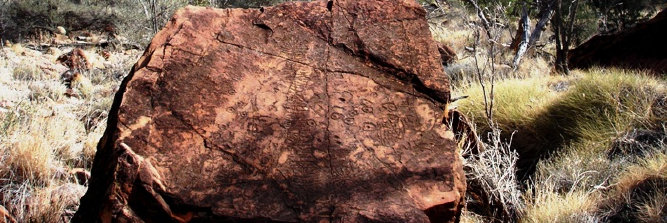
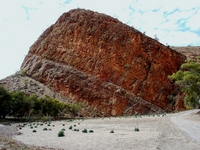
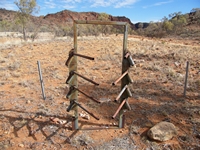
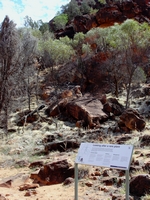
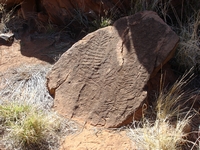
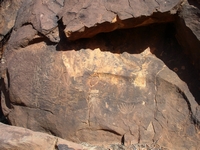
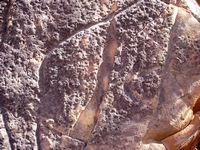
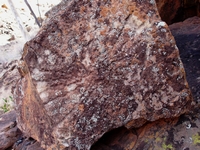
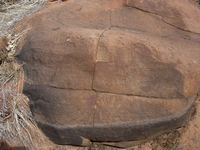
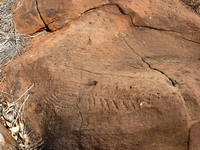
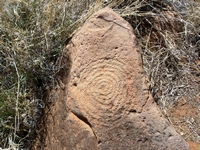
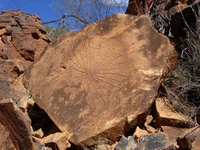
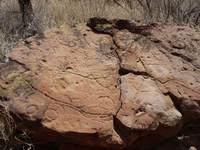
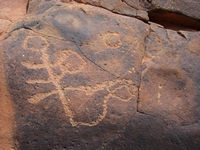
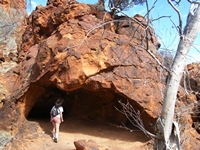
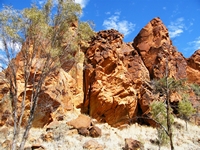
Utnerrengatye and Ntjarlke; the Caterpillar Dreaming Story (from signage at the site).
Of nearly 6,000 petroglyphs in
this gorge, most are stylized symbols of circles and lines.
Arrernte custodians of Irlwentye say that this set of petroglyphs
tells the story of the life cycle of two caterpillars, Utnerrengatye and Ntjarlke.
This is part of a creation story where
the spirit ancestors roamed the land creating all living things, the landscape, language and law. Parts of the story are also
set in the sheer sandstone walls of the gorge.
The rare Sickle Leaf or Hayes Wattle, Acacia Undoolyana, is found in a small section of N’Dhala Gorge and is one of two rare plants
found in the gorge.
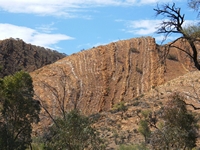
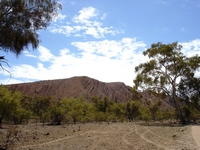
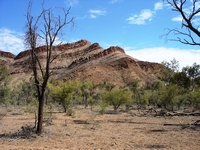
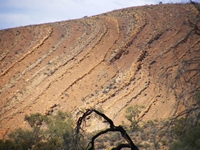
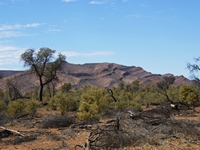
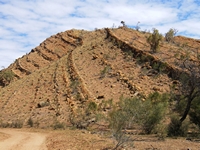
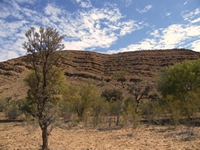
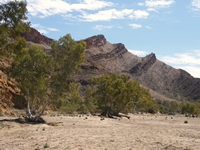
After leaving N’Dhala Gorge, we took a drive southwards along a track following the
At the junction of the track with the next station road, we looked across to a horizon to a ridge which looked like it a paper cut-out.
The soft coloured hills that unfolded before us each had strata at different angles, varying from horizontal to vertical. Every
hill was quite different.
Although taking our off road caravan through these sometimes sandy and sometimes narrow tracks would have been possible, we were pleased
to do this as a day trip without the heavy caravan in tow.
We needed to backtrack to return to the caravan at Trephina Gorge, and enjoyed the return drive in the afternoon light.
We spent another night a Trephina Gorge before returning to
